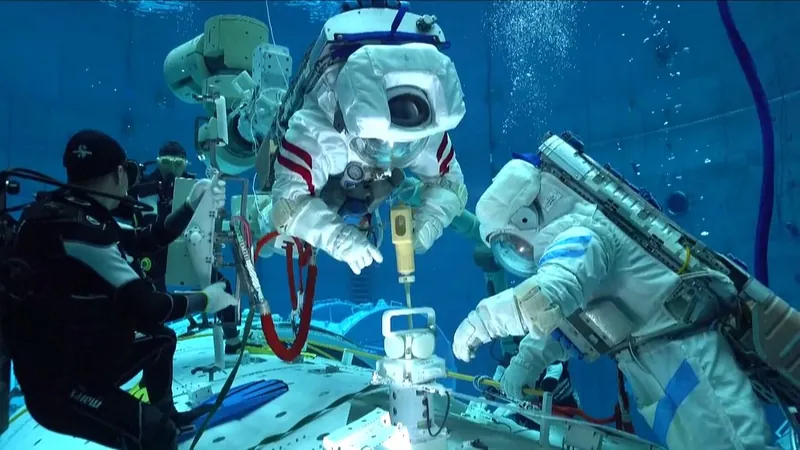
China Gears Up for Lunar Exploration with New Batch of Taikonauts
2024-11-02
Author: Wei Ling
China’s journey into space is steeped in innovation and ambition, with a history that dates back to the era of the Sung Dynasty (AD 960-1279), often credited with the invention of rocket technology.
Fast forward to today, and the Chinese National Space Administration (CNSA) is at the forefront of global space exploration, gearing up for groundbreaking missions, including their first human lunar landings.
The CNSA, founded in 1993, serves as China’s version of NASA and has made significant accomplishments in its space endeavors. From the remarkable Chang’e lunar missions to the historic landing of the Tianwen-1 rover on Mars, China is redefining its position in the cosmos.
Its ambition has only grown with the successful launch of the Tiangong space station, which has become a hub for international collaboration in scientific research and discovery.
In a recent announcement, the CNSA revealed the completion of its latest selection process, successfully identifying the fourth batch of taikonauts — the term for Chinese astronauts.
This new team, selected in May, comprises ten individuals, including eight highly experienced space pilots and two payload specialists. Their intensive training program commenced in August and spans over 200 critical areas designed to equip them for future missions not just to the Moon, but across an ambitious Chinese space agenda.
Training will encompass a comprehensive curriculum, focusing on essential skills such as living in microgravity, maintaining physical and mental health in space, and engaging in extravehicular activities (spacewalks).
Additionally, they will receive hands-on instruction in advanced spacecraft systems and conduct experiments set to be performed in microgravity.
The training program aims to refine the skills of taikonauts with targeted exercises for lunar missions. They will practice piloting spacecraft under varied gravitational forces, maneuvering lunar rovers, and mastering celestial navigation — crucial skills for successful operations on the lunar surface.
Moreover, they will engage in geological surveys and learn to effectively use scientific instruments in microgravity to further enhance their operational readiness.
As part of its ambitious space exploration strategy, China is not merely looking to participate in lunar missions but aims to establish a sustainable presence on the Moon.
Aspiring to achieve this before the decade is out, the CNSA is also working on developing infrastructure that would support continuous human exploration, including potential bases on the lunar surface.
With the world watching, the next chapter of China’s space legacy is being written. The upcoming lunar missions promise not only to expand our understanding of the Moon but also to unveil new scientific insights that could potentially benefit humanity as a whole.
Prepare for liftoff — the future of space travel is taking shape, and it’s unfolding beyond our earthly boundaries!

 Brasil (PT)
Brasil (PT)
 Canada (EN)
Canada (EN)
 Chile (ES)
Chile (ES)
 España (ES)
España (ES)
 France (FR)
France (FR)
 Hong Kong (EN)
Hong Kong (EN)
 Italia (IT)
Italia (IT)
 日本 (JA)
日本 (JA)
 Magyarország (HU)
Magyarország (HU)
 Norge (NO)
Norge (NO)
 Polska (PL)
Polska (PL)
 Schweiz (DE)
Schweiz (DE)
 Singapore (EN)
Singapore (EN)
 Sverige (SV)
Sverige (SV)
 Suomi (FI)
Suomi (FI)
 Türkiye (TR)
Türkiye (TR)